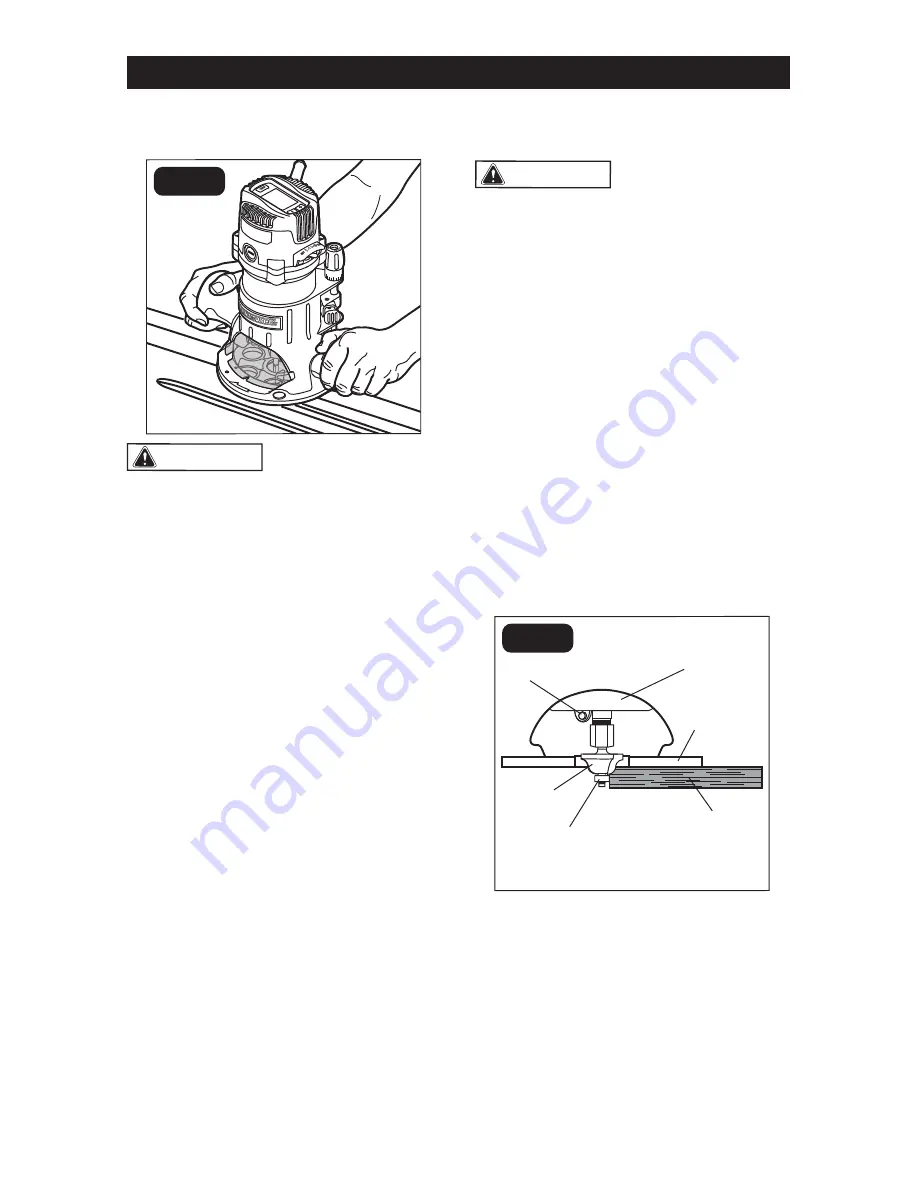
Page 16
FREEHAND ROUTING WITH THE
FIXED BASE (FIG. 14)
0
3/64
1/64
FIG. 14
WARNING:
Do not use large cutter
bits for freehand routing. Using large
cutter bits when freehand routing could
cause loss of control or create other
hazardous conditions that could result
in personal injury. If using a router table,
large bits should be used for edging only.
When used freehand, the router becomes
a flexible and versatile tool. This flexibility
makes it possible to easily rout signs, relief
sculptures, etc.
When freehand routing:
1. Draw or lay out the pattern on the
workpiece.
2. Choose the appropriate bit.
3. Follow the instructions for INTERNAL
ROUTING, and rout the pattern in two or
more passes. Do not exceed 1/8” depth
of cut in a single pass. This will help
provide better control, as well as serve
as a guide on the next passes.
NOTICE: A core-box bit or V-groove bit is
often used for routing letters and engraving
objects. Straight bits and ball mills are often
used to make relief carvings. Veining bits
are used to carve small, intricate details.
NOTICE: Making a single deep cut is
never advisable. Smaller-diameter bits are
easily broken by too much side thrust and
torque. Larger bits will cause a rough cut
and be difficult to guide and control.
OPERATION
For these reasons, do not exceed 1/8”
depth of cut in a single pass.
WARNING:
Always securely clamp
your workpiece in place, and keep a firm
grip on the router base with both hands at
all times. Failure to do so could result in
loss of control causing possible serious
personal injury.
EDGING WITH A PILOT
BIT (FIG. 15-16)
Arbor-type bits with pilots are excellent for
edge shaping of any workpiece edge that is
either straight or curved at a curvature that
is as great as or greater than the radius of
the bit to be used. The pilot prevents the bit
from making an excessively deep cut; and
holding the pilot firmly in contact with the
workpiece edge throughout prevents the cut
from becoming too shallow.
TOP EDGE SHAPING (FIG. 15)
FIG. 15
Motor
housing
Fixed base
sub-base
Work piece
TOP EDGE SHAPING
Spindle lock
Cutter bit
Pilot
Whenever the workpiece thickness, together
with the desired depth of cut (as adjusted by
the cutting-depth setting) are such that only the
top part of the edge is to be shaped (leaving at
least a 1/16”. thick uncut portion at the bottom),
the pilot can ride against the uncut portion,
which serves to guide it (FIG. 15).








































